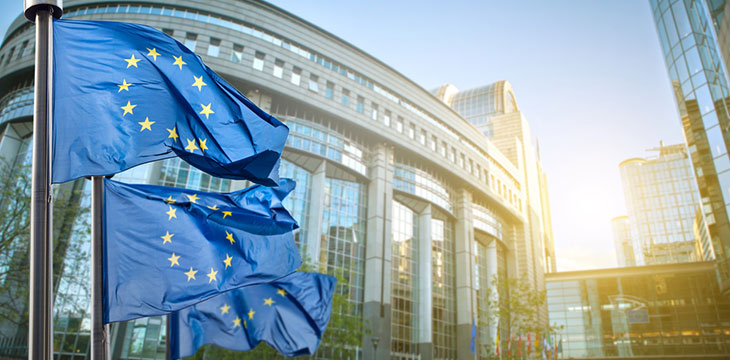|
Getting your Trinity Audio player ready...
|
Lawmakers in the European Parliament are proposing changes to the upcoming EU anti-money laundering bill to emphasize that NFT platforms and companies providing NFT-related services are within the scope of the regulation.
The proposed change to the anti-money laundering (AML) rules fills a noticeable gap in the EU’s landmark Markets in Crypto-Assets (MiCA) regulation, which currently excludes non-fungible tokens (NFTs) from its remit.
“NFT platforms are not covered in the current definition of crypto-assets service providers under the MiCA Regulation to the extent they do not provide services in crypto-assets that are fungible and non-unique,” stated a leaked draft of the AML proposal and reportedly confirmed by sources familiar with the negotiation.
The proposal concluded that “in order to close this gap and mitigate associated money laundering and terrorist financing risks, NFT platforms should therefore be included in the horizontal AML/CFT framework as a separate category of obliged entities.”
This new draft seems to confirm reports from September last year that the European Parliament was pushing for the inclusion of decentralized finance, decentralized autonomous organizations (DAOs), and NFTs into anti-money laundering provisions—areas not previously covered under the EU’s original proposals for the incoming AML/CFT legislative package.
This latest update comes after news in January that French regulators were calling for stricter regulations to prevent a repeat of 2022’s crises and collapses in the digital asset space, and the language of the leaked AML proposal further indicates that the EU is determined to leave no digital asset stone unturned with its sweeping regulatory changes.
The amendments will need to pass a vote on March 28, followed by a vote on the whole text, but should it go through platform operators and issuers of NFTs who thought they were off the hook will need to pay special attention to AML rules when they come into force, or could find themselves in conflict with the EU’s new AML authority.
AML and MiCA
In July 2021, the European Commission announced an ambitious package of legislative proposals aimed at strengthening the bloc’s anti-money laundering and countering the financing of terrorism (AML/CFT) rules. The package includes the 6th Directive on AML/CFT, new AML/CFT regulations—such as the setting up of an EU-wide limit of €10,000 ($10,688) to large cash payments—and a proposal for the creation of a new authority to fight money laundering, the Anti-Money Laundering Authority (AMLA).
The expansive package granted the AMLA oversight of digital asset companies’ activities in all EU member states, and the agency will also enforce the comprehensive MiCA framework in anti-money laundering and terrorism financing matters related to digital asset companies. The aim is to improve the detection of suspicious transactions and close regulatory loopholes.
The AMLA is expected to be operational in 2024, just in time for the MiCA regulations, which should come into force the same year if they pass their final vote next month—the vote was pushed back from February to April 2023 due to problems translating the almost 400-page file into the 24 official languages of the bloc.
NFTs being brought under tighter scrutiny by the soon-to-be AMLA fills a gap in the MiCA regulation that caught some unprepared or possibly overprepared.
Malta ahead of the curve
In December 2022, Malta’s Financial Services Authority indicated it would remove NFTs from its Virtual Financial Asset (VFA) regulation in preparation for MiCA coming into force.
Malta’s VFA regulation had one of the more stringent regulatory frameworks, which placed specific requirements on NFTs upon launch, including producing a product white paper before issuance.
However, the Malta Financial Services Authority (MFSA), which governs the area, cited the upcoming EU regime as the reason for dropping NFTs from its regulation, stating MiCA will “exclude crypto-assets which are unique and not fungible with other crypto-assets from its scope, eliminating the need for any form of authorization when engaging in issuance or provision of services in relation to NFTs.”
Ironically, it now seems another future regulatory regime intends to put NFTs back onto the enforcement agenda, at least from an anti-money laundering and counter-terrorism perspective.
The EU has said it will review its policy on NFTs with regard to their absence from the MiCA regulation: “Within 18 months the European Commission will be tasked to prepare a comprehensive assessment and, if deemed necessary, a specific, proportionate and horizontal legislative proposal to create a regime for NFTs and address the emerging risks of such new market.”
While the European Commission observes the implementation of MiCA and mulls over whether and how best to include NFTs in a more comprehensive regime, it looks as though the unique assets will have at least some regulatory scrutiny when it comes to AML/CFT matters.
Watch: Metaverse, NFTs & Blockchain

 12-26-2025
12-26-2025 




